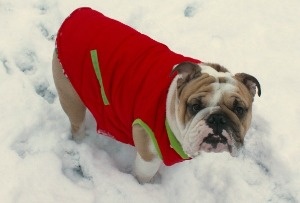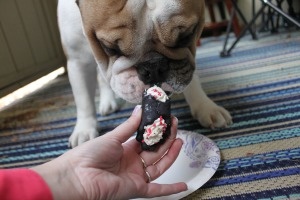 When I started reading the Packaged Facts report Millennials as Pet Market Consumers, I laughed out loud because I truly am the poster child for Millennial pet owners. My "fur baby" Bruce is a little over one and a half, and I treat him like my real child. Bruce has a full wardrobe and is covered by pet insurance (which has paid for itself). He received a doggy cannoli on Valentine’s Day and has been given plenty of Christmas presents each year, and when I was doing my taxes last week, I thought to myself, why isn’t Bruce considered a dependent?
When I started reading the Packaged Facts report Millennials as Pet Market Consumers, I laughed out loud because I truly am the poster child for Millennial pet owners. My "fur baby" Bruce is a little over one and a half, and I treat him like my real child. Bruce has a full wardrobe and is covered by pet insurance (which has paid for itself). He received a doggy cannoli on Valentine’s Day and has been given plenty of Christmas presents each year, and when I was doing my taxes last week, I thought to myself, why isn’t Bruce considered a dependent?
As it turns out, my experience is reflective of a larger generational trend. Between 2007 and 2015, Millennials were responsible for 43 percent of the growth in the number of pet owners in the United States. Together, Millennial pet owners spent a total of $10.6 billion on their pets in 2014. Why? Because we love our pets.
With information from industry expert Packaged Facts, here's a look at Millennial pet ownership trends that will shape the future of the American pet industry.
Millennials are driving pet ownership.
The future of pet owners will depend on the Millennial generation. Millennial pet owners account for 31 percent of all pet owners and are more likely to own pets than those who are 35-and-over. Between 2007 and 2015, the number of Millennial pet owners grew 25 percent, while the number of pet owners 35-and-over only grew 14 percent. Millennials are going to play a key role in the market for pet products and services because they are the fastest growing group of owners. According to the Packaged Facts report Millennials as Pet Market Consumers, the Millennial generation will add 2.6 million pet owners between now and 2020.
Millennials are changing the way pet products are purchased.
Millennials are basically glued to their smartphones, so it’s no surprise that many mobile apps have been developed to help pet owners make their purchasing decisions. Mobile apps specifically for pet owners have features such as shopping lists, loyalty programs, delivery options, and QR scanning for discounts and promotions. Pet food delivery has also benefited from Millennial pet owners. Among Millennials, 18 percent of dog and 16 percent of cat owners use this service.
 Millennials spend more on pet products and services.
Millennials spend more on pet products and services.
Because so many Millennials own pets, it’s no surprise that they expect to spend more on pet products in the next few years. But that doesn’t just mean spending on basic pet necessities. Both dog and cat owners are more likely to spend money on products that pamper their pets, (remember the cannoli?). Those who pamper their pets also are more likely than other generations to impulse buy for their pets. Many Millennials agree with the statement “Every once in a while I like to ‘splurge’ on an item for my pets.”
Millennials pay attention to the health and wellness of their pets.
Concerns about pet health and wellness has played an important role in the introduction of healthier food, nutritious pet treats, and healthcare options. Pet owners in the 18- to 34-year-old group focus on the contents of the food they feed their pets, with 68 percent agreeing that they read the ingredient list of their pet’s food. Although this group of consumers can be price sensitive, they are more likely to use pet foods with formulations that enhance the health of their pets than older generations.
Although Millennials are proponents of healthier foods and treats, they are mixed about how they feel about giving medications to their pets. They are more likely to prefer holistic/natural pet treatments before resorting to pet medications. But, Millennial pet owners are also more likely than pet owners who are 35-and-over to buy pet medications.
Find out more about the pet industry
Interested to learn more pet industry statistics? Be sure to check out a free downloadable presentation on the top pet companies in the U.S.


